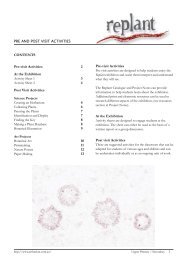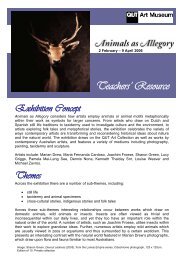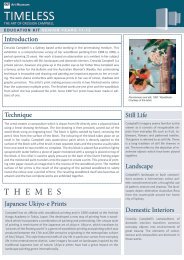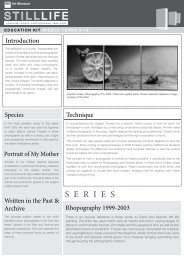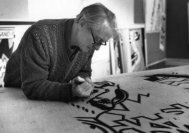Clifton Pugh - QUT Art Museum
Clifton Pugh - QUT Art Museum
Clifton Pugh - QUT Art Museum
You also want an ePaper? Increase the reach of your titles
YUMPU automatically turns print PDFs into web optimized ePapers that Google loves.
<strong>Clifton</strong> <strong>Pugh</strong> PRINTMAKER<br />
Page 16<br />
About the theme<br />
The first mythological theme that <strong>Pugh</strong> explored in his print work at Stanley Hayter’s<br />
Atelier 17 was Europa and the Bull, for which he made two distinct versions. Soon after<br />
he began exploring the theme of Leda and the Swan in etchings. Both were subjects that<br />
<strong>Pugh</strong> had already explored in paintings, Europa and the Bull (1959) and Leda and the<br />
Swan (1964). However, Hayter was also interested in mythology which may have<br />
provided a further stimulus to explore these themes.<br />
Like Hayter, and other artists drawn to the Atelier 17, <strong>Pugh</strong> was not so much interested in<br />
recreating the myths visually for their own sake, but rather to use them as allusions to<br />
other truths; things connected to primal urges and prohibitions. <strong>Pugh</strong> was particularly<br />
drawn to the Greek myth of Leda and the Swan in which Zeus transforms himself into a<br />
Swan to seduce Leda. The relationship between the two seems to transform through the<br />
various prints of the myth that <strong>Pugh</strong> produced. In Leda and the Swan, 1970, the Swan<br />
sits perched above Leda, dominating her disjointed form. In Leda and the Swan, 1971,<br />
Leda appears on the same plane as the Swan, which rears up before her. Leda embraces<br />
her legs tightly to her chest and she glances fearfully at the Swan over her knees. In<br />
1989 though, we find the lovers entwined in a mutual embrace, as they dance together in<br />
a lagoon, surrounded by a softly shimmering light.<br />
At the end of 1970s <strong>Pugh</strong> Australianized the myth so that Zeus transformed into an Emu<br />
rather than a Swan. Familiar with the Australian Emu, a number of which lived with <strong>Pugh</strong><br />
at Dunmoochin, he felt that the gauche Australian male resembled this awkward creature.<br />
At first the Emu is too focused on himself to notice Leda and then he is confounded by<br />
her interest and makes her wait before finally approaching her. Leda waits for the Emu to<br />
make his move in numerous Australian environments, the bush, the desert, a dam in the<br />
moonlight. At times, such as when she reclines in the deserts, she seems to merge with<br />
the landscape itself.<br />
The Australian landscape was instrumental in suggesting another Greek myth to <strong>Pugh</strong>.<br />
One imagines that it was the intensity of the Australian sun and the rocky landscape that<br />
suggested to <strong>Pugh</strong> that the Bungle Bungles might have been the backdrop to Icarus’<br />
attempt to fly to the sun. <strong>Pugh</strong> first produced Icarus and Sturt Rose in the Bungle<br />
Bungles in 1986, but the idea must have remained imprinted in his mind. When he again<br />
decided to produce another Bungle Bungles etching in 1989 he again connects the<br />
scene with Icarus. He was not content with this new attempt though, and in the resulting<br />
etching Waterhole in the Bungle Bungles the area where Icarus flew has been turned<br />
into a large green waterhole.<br />
Keywords<br />
symbolist myth icon<br />
lagoon photograph emu<br />
waterhole landscape satire<br />
intensity colonise


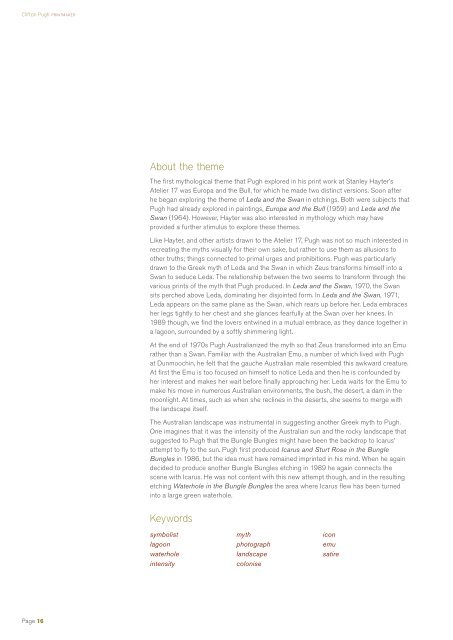

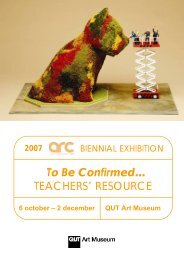

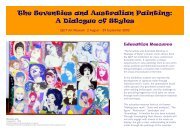
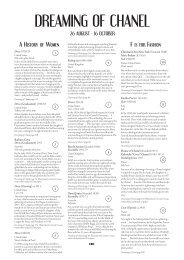
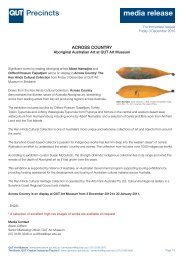
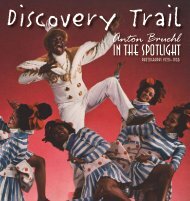

![Senior Years (10-12) [pdf - 4.5 MB] - QUT Art Museum](https://img.yumpu.com/38225334/1/184x260/senior-years-10-12-pdf-45-mb-qut-art-museum.jpg?quality=85)
